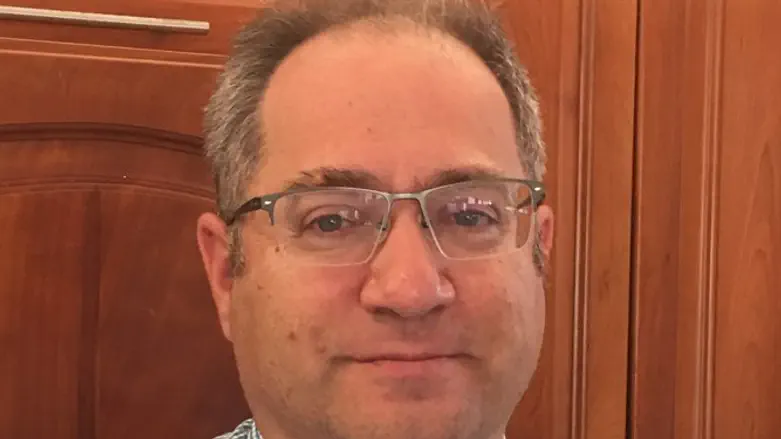
The Jews of Judea who were exiled to Babylon during the time of the destruction of the First Temple in 586 BCE were soon under the control of the new ruling Persian Empire. The Persian emperor, Cyrus, in 538 granted the Jews the right to return to Judea to rebuild the Jerusalem Temple.
“So says Cyrus, king of Persia, all the kingdoms of earth had Hashem, G-D of heaven, delivered to me and He has commanded me to build Him a Temple in Jerusalem, which is in Judea. Anyone among you among His people, may G-D be with him, let him go to Jerusalem, which is in Judea and build the Temple of Hashem, G-D of Israel-He is the G-D!-which is in Jerusalem.” (Ezra, Chapter 1:1-4)
In total, 42,360 initially answered the call. Upon their return, they encountered those Jews of Judea who were not exiled and soon embarked upon the task of rebuilding the Temple and the Jewish commonwealth. Opponents of the re-establishment of Judea, the Samaritans, raised their objections leveling accusations of rebellion prompting the Persian King Darius, to temporarily suspend construction of the Temple. However, with construction resumed under Darius, it was completed by 517 fulfilling the prophesy of Jeremiah that the exile would last seventy years.
A scribe and eminent Torah scholar, Ezra, who was also the main founder of the legislative body, the Men of the Great Assembly, delayed his immigration to Judea, until the death of his teacher Baruch ben Neriah, who was too weak to make the long and difficult journey. He left for Judea with the King’s approval and protection accompanied by fifteen hundred returnees to Zion. When Ezra arrived the Temple was already rebuilt.
Upon his arrival, Ezra was distraught to see the spiritual decline of his people and set about improving religious observance in the land. There was also the news of wide scale intermarriage in Judea. Even the son of the high priest was married to a non-Jew. Ezra sought to rectify the situation. He called for a three day assembly in Jerusalem, where he urged the people to keep the Torah. He then asked the men who were in inter- marriages to separate themselves from their wives. “You have transgressed and harbored alien wives, adding to Israel’s inequity. Now, confess before Hashem, G-D of your fathers and perform His will.” His words resonated and the people consented.
Ezra inspired the masses to return to Torah observance. He instituted Takkanot (decrees) aimed at preserving Jewish families, the Sabbath, and other Jewish rites. (Talmud Bava Kamma 82A) However, interaction with the Samaritans and their associates continued along with a lack of enforcement of the laws and decrees in the following years, religious observance continued to decline in Judea.
Nechemia, a cup-bearer to the king, was very distressed upon hearing of the situation in Judea, and he received permission to go and act as military governor. There, he directed the building of the walls around Jerusalem to thwart the attacks on Jerusalem from the Samaritans and the Ammonites. He also made sure the markets were closed on the Sabbath, and that the people contributed to the upkeep of the Temple.
On Rosh Hashanah, the leaders appealed to the nation.
The masses of Jerusalem assembled at the Water Gate. It was the first day of Rosh Hashanah. The purpose of the assemblage was to inspire the people to mend their ways. Ezra stood before the people and prepared to read aloud from a Torah scroll.
“And Ezra opened the Torah scroll before the eyes of the entire people, for he was above all the people, (on a platform specifically constructed for the event) and when he opened it, all the people stood. And Ezra blessed the Lord, the great G-D and the people answered ‘Amen, Amen,’ with the uplifting of their hands, and they bent their heads and prostrated themselves to the Lord on their faces to the ground.” (Nechemia 8:6)
From the morning hours, Ezra read the Torah, which was clarified to the people through translations into Aramaic, the common vernacular at the time. As the people heard the words of the Torah and reflected upon their past misdeeds, due to their lack of knowledge and understanding, the mood turned somber. Many openly wept and begged to be permitted to fast. Seeing the open display of contrition and remorse, Ezra reminded the people that the day was Rosh Hashanah-a holiday, not a day for mourning. He told them, “Go, eat fat foods and drink sweet drinks and send portions to whoever has nothing prepared, for the day is holy to our Lord, and do not be sad, for the joy of the Lord is your strength.” (Nechemia 9:10) Rosh Hashanah, is a holiday, the people were to be confident in Hashem’s judgement.
The following day, the second day of Rosh Hashanah, the people returned to learn and understand more about Torah law from the sages. They were reminded of the importance of observance of the upcoming Sukkot holiday and were instructed to build Sukkot. The text relates that the Sukkot holiday was the greatest since the time of Joshua.
That Rosh Hashanah helped pave the path for the era of the second commonwealth, to which so much importance is attached in the history of Jewry. The people’s recognition of their misdeeds led to a spiritual renewal and a renaissance of Jewish life.